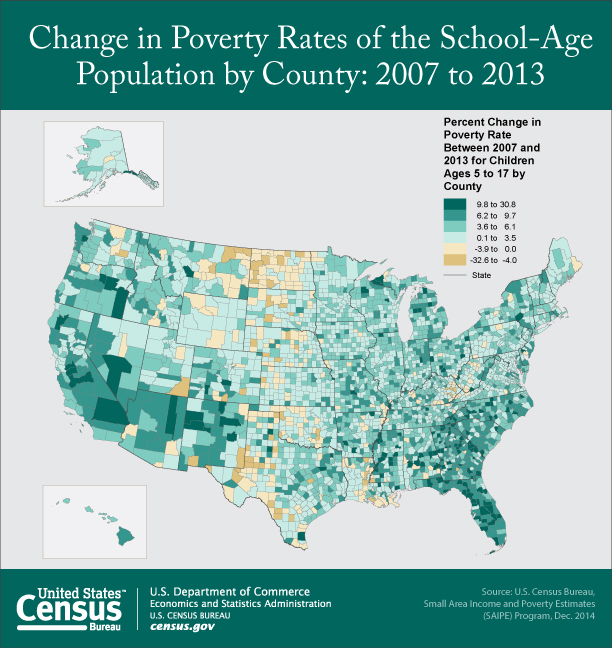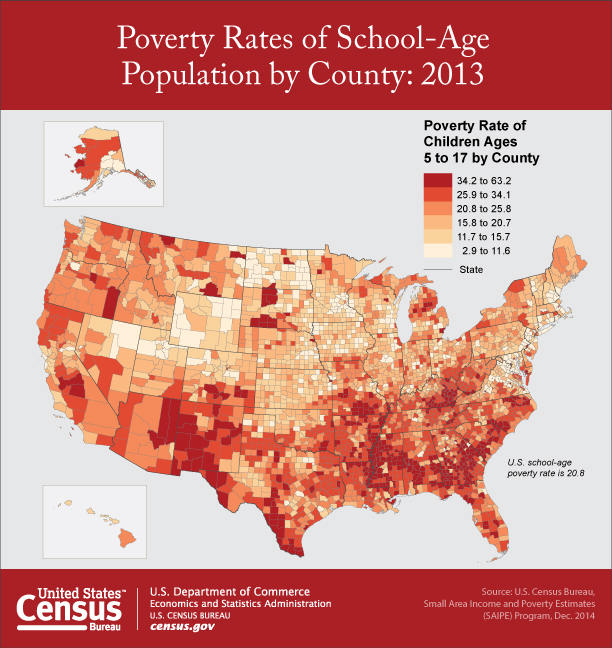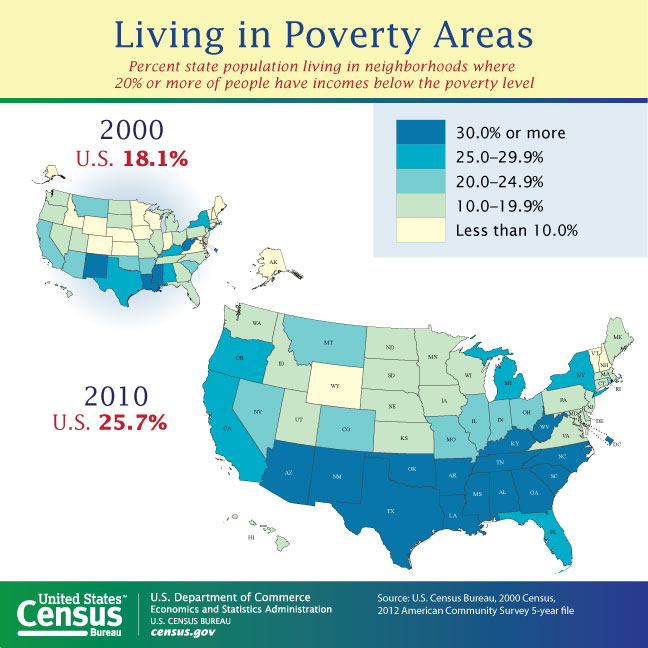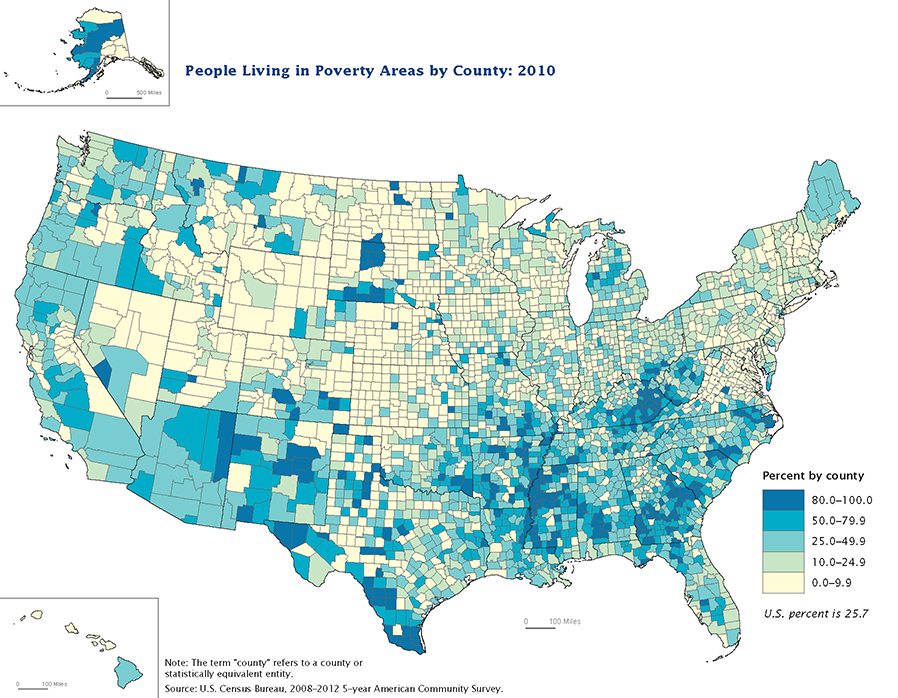The nation’s poverty rate was 15.5% in 2013, down from 16.0% in 2012, according to the supplemental poverty measure released October 16 by the U.S. Census Bureau. The 2013 rate was higher than the official measure of 14.5%, but similarly declined from the corresponding rate in 2012.
Meanwhile, 48.7 million were below the poverty line in 2013 — not statistically different from the number in 2012. In 2013, 45.3 million were poor, using the official definition released in Sept. 2014 in Income and Poverty in the United States: 2013.
These findings are contained in the Census Bureau report The Supplemental Poverty Measure: 2013, released with support from the Bureau of Labor Statistics and describing research showing different ways of measuring poverty in the United States.
The supplemental poverty measure is an effort to take into account many of the government programs designed to assist low-income families and individuals that were not included in the current official poverty measure, released Sept. 16.
While the official poverty measure includes only pretax money income, the supplemental measure adds the value of in-kind benefits, such as the Supplemental Nutrition Assistance Program, school lunches, housing assistance, and refundable tax credits. Additionally, the supplemental poverty measure deducts necessary expenses for critical goods and services from income. Expenses that are deducted include taxes, child care and commuting expenses, out-of-pocket medical expenses, and child support paid to another household.
Estimates for States
The differences between the official and supplemental poverty measures varied considerably by state. The supplemental rates were higher than the official statewide poverty rates in the District of Columbia and 13 states: Alaska, California, Connecticut, Florida, Hawaii, Illinois, Maryland, Massachusetts, Nevada, New Hampshire, New Jersey, New York, and Virginia.
For another 26 states, supplemental rates were lower than the official statewide poverty rates. The states were Alabama, Arkansas, Idaho, Indiana, Iowa, Kansas, Kentucky, Louisiana, Maine, Michigan, Mississippi, Missouri, Montana, Nebraska, New Mexico, North Carolina, North Dakota, Ohio, Oklahoma, South Carolina, South Dakota, Tennessee, Texas, West Virginia, Wisconsin, and Wyoming. Rates in the remaining 11 states were not statistically different using the two measures.




